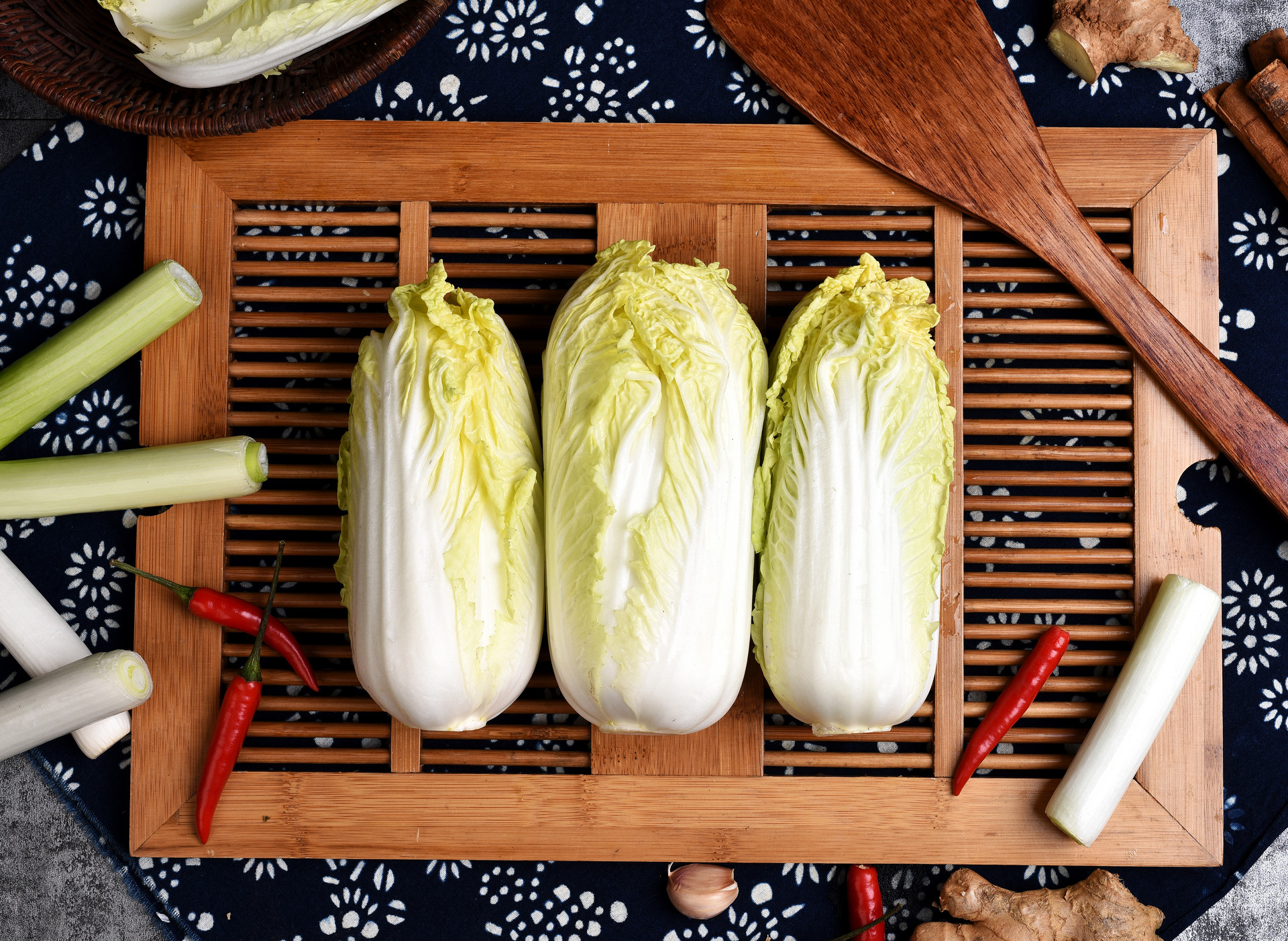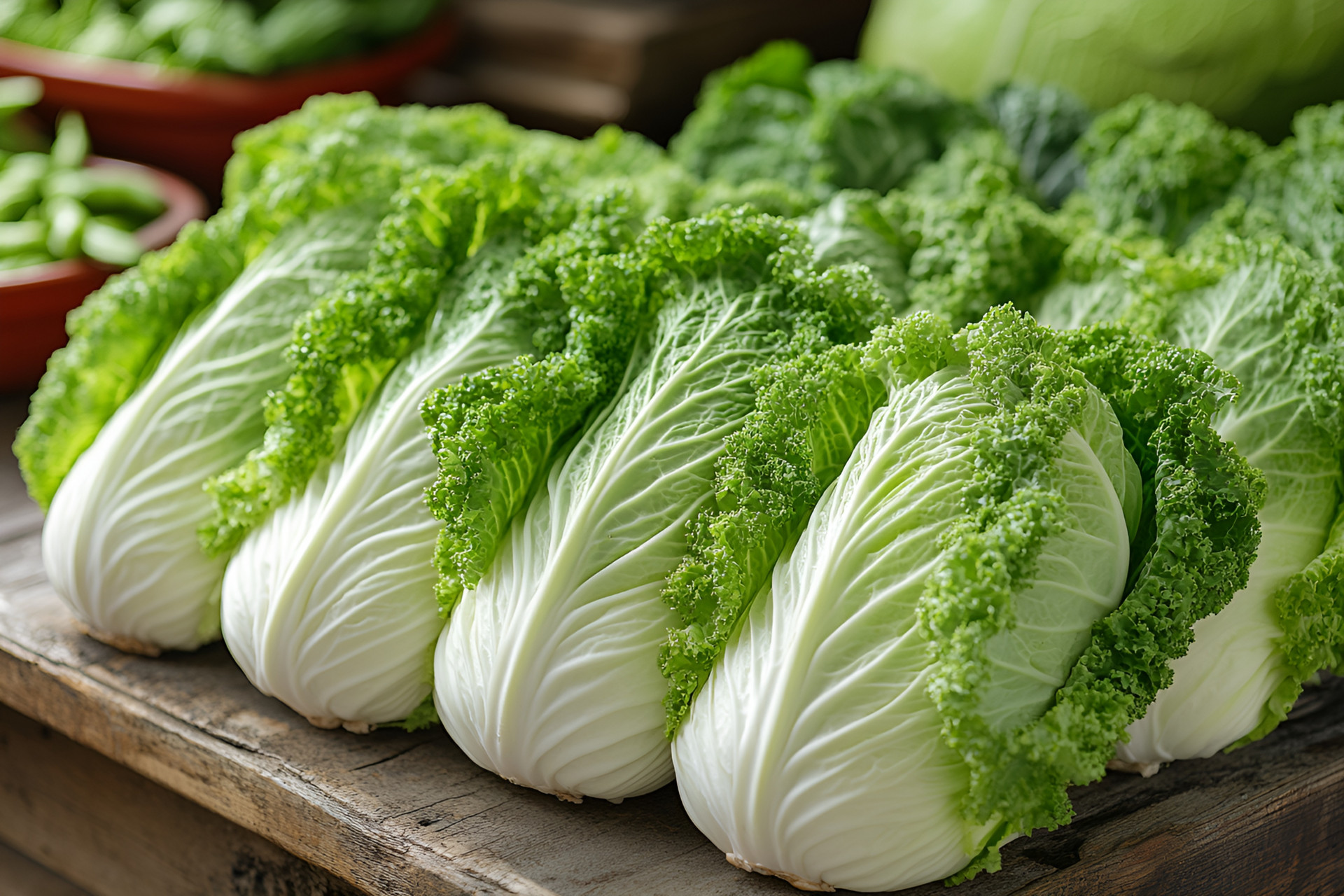Sour & Spicy Baby Chinese Cabbage Recipe


One time when I was visiting with my friends, I ate a delicious spicy and sour baby cabbage. The taste was unforgettable. After I went back, I kept trying to make it, and finally I replicated it one afternoon. Today I will share this recipe with you!
What is hot and sour baby cabbage?
Hot and Sour Baby Cabbage is made with baby cabbage as the main ingredient, and added with peppers, garlic and other ingredients. It has a sour, spicy and crisp taste and is a home-cooked dish with good color, aroma and taste. It is very simple to make, with only a few steps and can be completed in 20 minutes.
Differences Between Baby Chinese Cabbage and Chinese cabbage?
I. Different appearances
Size and shape: Baby Chinese Cabbage is usually relatively small in size and has a relatively uniform shape and size. Chinese cabbage is relatively large in size and has an irregular shape.

Color: Baby Chinese Cabbage is light yellow or tender green in color. Chinese cabbage is darker in color, presenting dark green or yellow-green.
Leaf shape: As Baby Chinese Cabbage is relatively small, its leaves are relatively narrow, elongated, and have smooth edges. Chinese cabbage leaves are relatively wide, oval or round, and have serrated edges.
II. Taste differences
Tenderness: Baby Chinese Cabbage has a relatively delicate taste, is crispy and juicy. The stems of Chinese cabbage are relatively hard, and the leaves are relatively old, with a slightly rough taste.
Sweetness: Baby Chinese Cabbage has a relatively sweet taste and delicious flavor. The taste of Chinese cabbage is relatively soft compared to Baby Chinese Cabbage and slightly plain.
Fiber content: The fiber content of both is relatively high among vegetables, but Baby Chinese Cabbage has a relatively lower fiber content compared to Chinese cabbage.
III. Nutritional value differences
Vitamin content: Both have relatively high contents of vitamins C, vitamin B1, vitamin B2, etc., but overall, Baby Chinese Cabbage is higher than Chinese cabbage.

Mineral content: The mineral contents of Baby Chinese Cabbage and Chinese cabbage are both high, such as minerals like calcium, phosphorus, and iron. But overall, Baby Chinese Cabbage is still higher.
Dietary fiber content: The dietary fiber contents of both are relatively high, but Chinese cabbage has a higher dietary fiber content than Baby Chinese Cabbage.
IV. Cooking method differences
There are many ways to cook Baby Chinese Cabbage and Chinese cabbage. In daily life, Baby Chinese Cabbage is mainly used in cooking methods such as cold salad, stir-frying, and boiling soup. While Chinese cabbage is used in cooking methods such as stir-frying, stewing, and pickling.
V. Purchase and preservation differences
Purchase: Whether choosing Baby Chinese Cabbage or Chinese cabbage, pay attention to complete appearance, bright color, tender leaves, and no pests and diseases. You can also judge whether Baby Chinese Cabbage and Chinese cabbage are fresh by smelling. If there is an abnormal smell or stench, don't buy them.
Preservation: Both are relatively durable in storage. In winter, Baby Chinese Cabbage and Chinese cabbage can be directly stored in a cool and ventilated place. If it is summer, Baby Chinese Cabbage and Chinese cabbage can be stored in the refrigerator.
Ingredients Needed and Substitutions
The ingredients needed to make delicious baby cabbage include:
Main Ingredients
Baby cabbage: It is the main ingredient, which improves the crispy taste .
Side dishes
Garlic and dried chili peppers : enhance the spiciness and special aroma, and add layers to the taste of dishes .
Seasoning
Salt , light soy sauce, and oyster sauce : they not only provide saltiness and umami flavor, but also increase the color of dishes .
Sugar and aged vinegar : provide sweetness and sourness to dishes , balance the spiciness , and make the dishes taste richer .
Alternatives:
Baby cabbage: If you don’t have baby cabbage, you can use Chinese cabbage or lettuce instead.
Garlic: Onions or shallots can be used instead.
Dried chili: If you don’t like spicy food, you can omit it. If you don’t have dried chili, you can use chili powder or fresh chili instead.
Light soy sauce: Salty soy sauce can be used instead.
Aged vinegar: If you don’t have aged vinegar, you can use lemon juice or apple cider vinegar instead.
Matters Needing Attention
1. Choosing fresh baby cabbage is the first step to successfully making spicy and sour baby cabbage. Fresh baby cabbage has a crispy taste.
2. Pay attention to the proportions when preparing the sauce, and add seasonings such as aged vinegar, chili pepper, and light soy sauce according to your personal taste.
3. Pay attention to the heat when stir-frying baby cabbage and minced garlic and chili. The heat should not be too high, otherwise the dish will be burnt, and it should not be too low. The baby cabbage stir-fried at low heat will have a soft and rotten texture.
4. The order of frying is very important. Generally, stir-fry the minced garlic, chili and other side dishes first, then add the baby cabbage stems and leaves and stir-fry, which can better stimulate the aroma.
INGREDIENTS
Main Ingredients
-
·400g Baby Cabbage
Additional Ingredients
-
·10g garlic
-
·5g Dried chili pepper
Seasonings
-
·5g (one spoon) Salt
-
·2.5g (half spoon) sugar
-
·10ml Light Soy Sauce
-
·10ml Oyster sauce
-
·10ml Vinegar
-
·30ml Oil
COOKING STEP
Step 1
Ingredients preparation: remove the roots of the baby cabbage, wash and cut into stalks and leaves; mince 10g of garlic; cut 5g of dried chili into 1 cm pieces.

Step 2
Heat oil in a hot pan: Pour about 20ml of oil into a pan and heat it.

Step 3
Stir-fry the seasonings: Add the minced garlic and stir-fry, then add the dried chili segments and stir-fry until fragrant.

Step 4
Fry the stems first: quickly pour in the baby cabbage stems and stir-fry.

Step 5
Stir-fry the leaves: Add the leaves after 30 seconds and continue stir-frying.

Step 6
Season and serve: Add 5g salt, 2.5g sugar, 10ml light soy sauce, 10ml oyster sauce, and 10ml aged vinegar, stir-fry for about 1 minute and serve.

More delicious recipes worth trying
Delectable Crispy Chicken Recipe
Serving suggestions:
Recommended pairing
Rice: Hot and sour baby cabbage is a very appetizing dish. Eating it with rice can greatly increase people's appetite.
Noodles: Pour the soup of hot and sour baby cabbage on the noodles. Whether it is thin noodles or wide noodles, it tastes particularly good.
Meat: In order to maintain a balanced nutrition, hot and sour baby cabbage can also be eaten with braised pork, fried pork with peppers, etc., which not only tastes good but also has high nutritional value.
Vegetables: Hot and sour baby cabbage can also be paired with various stir-fries, such as shredded potatoes, cold cucumbers, and stir-fried broccoli.
Serving suggestions
Eat in moderation: Hot and sour baby cabbage tastes sour and spicy, so eat in moderation to avoid burdening the stomach and intestines.
Seasoning according to personal taste: You can adjust the amount of seasonings such as soy sauce, salt, vinegar, and chili according to your personal taste to ensure that the sour and spicy taste is moderate and not too irritating.

















